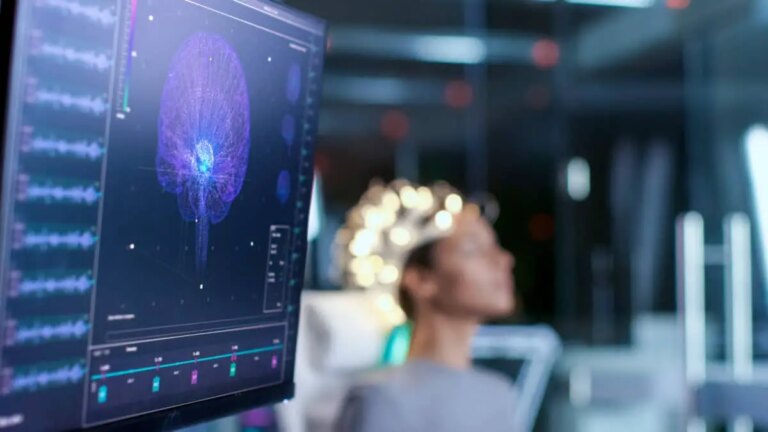In a world predominantly designed for right-handers, being left-handed is akin to having a secret superpower. This unique trait endows those who possess it with a distinct perspective on life, making them stand out in a crowd of right-handed counterparts. The notion that “lefties think outside of the box” is not just an adage but a testament to the remarkable ways in which left-handers navigate their day-to-day lives. From their innovative problem-solving skills to their abstract reasoning abilities, left-handers bring a splash of creativity and uniqueness to a world that often overlooks the beauty of diversity. Their journey, however, is not without its challenges. 1
Living in a right-handed world means left-handers must constantly adapt to tools and environments designed without their needs in mind. Yet, it is this very need to adapt that fosters resilience and ingenuity among left-handers. This article seeks to shed light on the challenges faced by left-handers, celebrate their triumphs, and delve into the fascinating traits that make them truly extraordinary. As we embark on this exploration, we’ll discover not only the hurdles left-handers overcome but also the incredible advantages they enjoy. From the arts to athletics, and the unique wiring of their brains, the story of left-handers is one of triumph, creativity, and resilience. Let’s begin our journey into the captivating world of left-handers, where every challenge is an opportunity for innovation, and every difference is a cause for celebration.
The Creative Edge of Left-Handers
The inherent ability of left-handers to think creatively and approach problems from unique angles is a fascinating aspect of their cognitive wiring. This capability is not merely anecdotal but is supported by a body of research suggesting that left-handers have a natural inclination toward divergent thinking and abstract reasoning. Such skills are crucial for effective problem-solving and creativity, allowing left-handers to devise solutions and ideas that might elude their right-handed peers. Their distinct perspective on the world is not just a matter of handedness but a reflection of a different cognitive process at play, fostering innovation across various domains.2
In the realms of art, music, and literature, left-handers have historically made their mark, bringing forward groundbreaking work that resonates with originality and innovation. This trend can be traced back through history, with many notable inventors, artists, and musicians sharing this common trait. Their left-handedness contributes to a unique cognitive approach that sets them apart, particularly in fields that demand fresh perspectives and novel solutions. The ability to think outside the conventional box is a hallmark of left-handed individuals, enabling them to excel in creative and innovative endeavors.
This cognitive advantage extends beyond the arts. In industries that prize innovation, such as technology and engineering, left-handers bring valuable insights and approaches to problem-solving. Their capacity for abstract thinking and seeing the bigger picture contributes significantly to advancements in these fields. It’s the unconventional thinking patterns of left-handers that often lead to breakthroughs and new ways of understanding complex problems. This creative edge is a testament to the diverse talents and perspectives that left-handers bring to the table, underscoring the importance of embracing and nurturing this unique potential.

Exceptional Hand-Eye Coordination and Physical Agility
Left-handed individuals often exhibit superior hand-eye coordination and physical agility, traits that significantly benefit them in various activities, especially sports. This enhanced coordination is not merely a casual observation but is backed by scientific research indicating that left-handers, on average, have faster reaction times than their right-handed counterparts. Such an advantage is particularly pronounced in sports that demand quick reflexes and rapid decision-making, such as tennis, baseball, and basketball. In these high-speed environments, left-handers’ ability to respond swiftly gives them a distinct edge over competitors, making them formidable opponents in direct one-on-one confrontations.
The advantages of being left-handed in sports are multifaceted. In tennis, for example, left-handed players can produce serves and shots that are less familiar and therefore more difficult for right-handed opponents to anticipate and counter. Similarly, in team sports like basketball, left-handed players often use their unique orientation to create plays and shots that disrupt standard defensive strategies. This ability to leverage their left-handedness allows them to excel and stand out in competitive arenas.
Beyond the sports field, the exceptional hand-eye coordination of left-handers translates into advantages in other activities requiring precision and speed. From musical performance to the fine arts, the agility and dexterity of left-handers enable them to master complex movements and techniques, further showcasing the broad spectrum of talents and abilities that left-handed individuals possess. This physical agility, combined with their creative and cognitive strengths, illustrates the multifaceted advantages of left-handedness, highlighting the importance of recognizing and supporting the unique skills of left-handers in all areas of life.
Enhanced Brain Connectivity: A Link to Faster Information Processing
Left-handers are often celebrated for their unique abilities in creative thinking and physical agility, but one of the most intriguing aspects lies within the structure and functionality of their brains. Studies have revealed that left-handed individuals tend to have faster and more efficient connections between the left and right hemispheres of the brain. This phenomenon is not merely a biological curiosity but has significant implications for how left-handers process information and solve problems. The enhanced interhemispheric communication allows for a more rapid transfer of data across the brain, enabling left-handers to process complex information more swiftly and effectively than their right-handed counterparts.3
This superior brain connectivity is thought to contribute to the diverse thinking styles of left-handers, integrating analytical and creative thought processes more seamlessly. It enables them to approach problems with a holistic perspective, making use of both logical analysis and creative intuition in their problem-solving strategies. This integrated approach is particularly beneficial in situations that require quick thinking and adaptability, traits that are highly valued in dynamic and fast-paced environments.
Moreover, the strengthened connections between brain hemispheres in left-handers may also play a role in their ability to perform tasks that require a high degree of spatial awareness and coordination. From navigating complex physical environments to excelling in fields that demand spatial reasoning, such as architecture and engineering, left-handers demonstrate a keen ability to understand and manipulate spatial relationships. This enhanced spatial ability, coupled with faster information processing, underscores the cognitive advantages that can accompany left-handedness, offering fascinating insights into the neurological underpinnings of this unique trait.

Enhanced Spatial Abilities: Architects of Innovation
Left-handers’ superiority in spatial reasoning is a key factor that sets them apart in fields that require advanced visualization and manipulation of space. This exceptional skill is evident in professions like architecture, engineering, technology, and mathematics, where the ability to conceptualize and work with spatial relationships is paramount. Studies have shown that left-handers often outperform their right-handed counterparts in tasks requiring spatial awareness, such as visualizing objects in three dimensions and mentally rotating them to solve complex problems. This advanced spatial ability enables left-handers to excel in roles that demand a high level of spatial cognition, contributing to innovative solutions and breakthroughs in their respective fields.
The significance of superior spatial abilities extends beyond professional achievements. It plays a crucial role in everyday tasks and hobbies, allowing left-handers to approach physical and mental challenges with a distinct advantage. Whether it’s navigating through an unfamiliar city, engaging in sports that require precise spatial judgments, or indulging in creative pursuits like painting or sculpture, left-handers’ spatial skills enhance their experiences and performance.
Furthermore, the ability to excel in spatial reasoning highlights the unique cognitive processing of left-handers, reinforcing the idea that they perceive and interact with the world differently. This difference is not just a matter of physical orientation but is deeply rooted in the brain’s structure and function, offering insights into the diverse ways humans can think and solve problems. Recognizing and nurturing these abilities can lead to more inclusive and effective approaches in education, work, and creative endeavors, ensuring that the talents of left-handers are fully utilized and appreciated.
Enhanced Spatial Abilities: A Left-Hander’s Perspective
Left-handed individuals often exhibit a remarkable proficiency in spatial reasoning, a skill that plays a pivotal role in fields such as architecture, engineering, technology, and mathematics. This superior spatial ability enables left-handers to excel in professions that require the visualization of objects in three dimensions and the understanding of complex spatial relationships. Studies have shown that left-handers generally outperform their right-handed counterparts in tasks that demand advanced spatial cognition, including mental rotation and spatial visualization exercises. This advantage suggests that the brain wiring of left-handers is particularly suited for tasks that involve conceptualizing and manipulating space.
The implications of this enhanced spatial ability are significant. In architecture and engineering, for instance, the ability to accurately visualize and manipulate three-dimensional objects and structures in one’s mind is crucial for designing efficient, innovative, and aesthetically pleasing solutions. Left-handers’ natural inclination towards superior spatial reasoning can facilitate the conceptualization of groundbreaking designs and technologies. Similarly, in the realm of mathematics and technology, spatial skills are indispensable for understanding and solving complex problems, where left-handers’ abilities can lead to innovative approaches and solutions.
This spatial advantage is not just about professional achievements; it also enriches the personal and academic experiences of left-handers. From navigating daily tasks to engaging in hobbies that require a keen sense of space, left-handers often approach these activities with a unique perspective and efficiency. Understanding and nurturing this innate ability in left-handed individuals can lead to significant advancements in various fields, highlighting the importance of creating environments that support diverse cognitive strengths. By recognizing and fostering the spatial talents of left-handers, society can benefit from the broad array of innovative solutions and perspectives they bring to the table, further emphasizing the value of diversity in cognitive abilities.
My Personal RX on Embracing and Supporting Left-Handedness
From a doctor’s perspective, embracing and nurturing left-handedness is not just about acknowledging a difference; it’s about fostering a healthy, inclusive environment that recognizes and supports the unique strengths and challenges left-handers face. Whether it’s in the realm of physical health, mental well-being, or the simple ergonomics of daily life, understanding the specific needs of left-handers can lead to better health outcomes and a more fulfilling life. Here are my tailored tips to help left-handers navigate a right-handed world while promoting their overall health and well-being:
- Ergonomic Tools for Left-Handers: Invest in left-handed tools and gadgets designed to suit your natural orientation. This simple step can significantly reduce strain and discomfort in daily tasks.
- Mind-Body Coordination Activities: Engage in activities like yoga or martial arts, which promote mind-body coordination and can help enhance your natural left-handed agility and reflexes.
- Collagen Plus Joint: Consider incorporating a supplement like Collagen Plus Joint into your routine to support enhanced joint function and reduce potential joint pain, especially if you engage in sports or activities that put additional strain on your joints.
- Creative Outlets: Utilize your natural inclination towards creativity by pursuing hobbies or careers in arts, music, or writing. This not only nurtures your talent but also contributes to your mental health.
- Protocol Guide: Follow a comprehensive lifestyle guide like the Protocol Guide, focusing on holistic health to ensure you’re living your best life. This guide can help balance your physical, mental, and emotional well-being.
- Adaptive Learning Strategies: If you’re studying or learning new skills, seek out resources or methods tailored to left-handed individuals. This can make learning more intuitive and enjoyable for you.
- Mindfulness and Stress Management: Practice mindfulness and stress management techniques. Left-handers may experience unique stressors in a right-handed world, making these practices particularly beneficial.
- Physical Fitness: Regular physical exercise is essential for everyone, but left-handers might find certain sports or fitness routines more suited to their natural strengths. Explore different activities to find what works best for you.
- Community and Support: Connect with other left-handers through communities and forums. Sharing experiences and tips can be incredibly supportive and enlightening.
By integrating these tips into your lifestyle, you can harness your left-handed abilities to their fullest potential while maintaining a balanced and healthy life. Remember, being left-handed is a unique gift that comes with its own set of challenges and advantages. Embrace it fully, and let it shine in every aspect of your life.

Sources:
- On the other hand: How lefties cope in a right-handed world. (2022, August 14). CBS News. https://www.cbsnews.com/news/on-the-other-hand-how-lefties-cope-in-a-right-handed-world/ ↩︎
- Richardson, T., & Gilman, R. T. (2019). Left-handedness is associated with greater fighting success in humans. Scientific Reports, 9(1). https://doi.org/10.1038/s41598-019-51975-3 ↩︎
- Marks, J. (2021, March 11). Are Left-Handed people smarter? Healthline. https://www.healthline.com/health/are-left-handed-people-smarter#:~:text=Examining%20data%20on%20about%20400%2C000,may%20have%20superior%20verbal%20skills. ↩︎




















